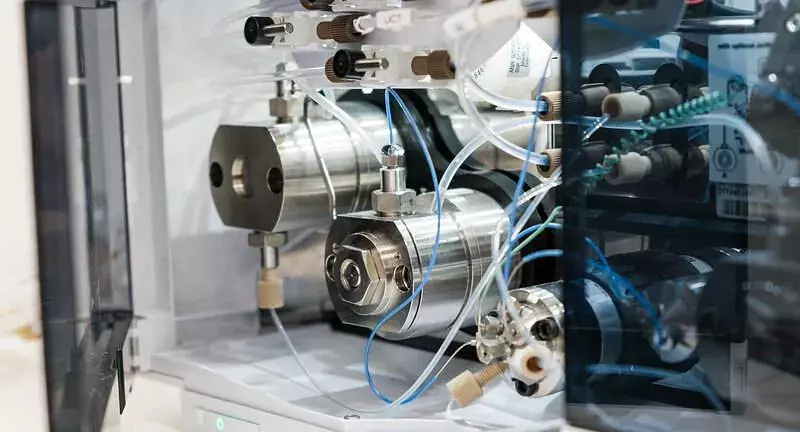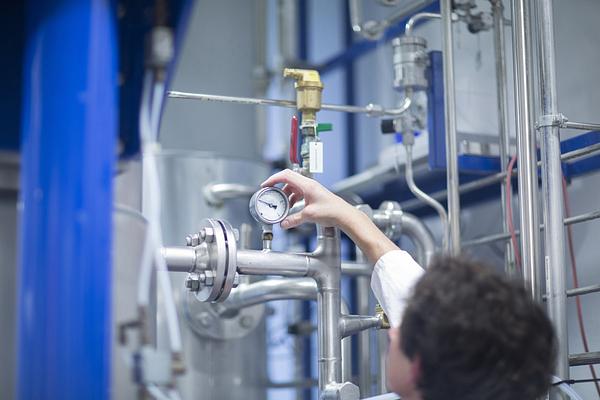 Gas chromatography works like a high-powered detective, helping scientists unlock mysteries in chemistry. Imagine a bowl of colored candy all mixed together - red, blue, green, and so on. Gas chromatography is a magic machine that can carefully separate every color in its bowl, revealing exactly what is in the mixture This amazing machine finds its usefulness in a variety of products, ensuring the safety of chemicals in, it monitors environmental pollution in the air and water, makes sure our food and drinks are clean!
Gas chromatography works like a high-powered detective, helping scientists unlock mysteries in chemistry. Imagine a bowl of colored candy all mixed together - red, blue, green, and so on. Gas chromatography is a magic machine that can carefully separate every color in its bowl, revealing exactly what is in the mixture This amazing machine finds its usefulness in a variety of products, ensuring the safety of chemicals in, it monitors environmental pollution in the air and water, makes sure our food and drinks are clean!
In the larger scientific landscape, gas chromatography systems supported by LabLink appear as superheroes equipped with X-ray vision. They have the unique ability to analyze complex chemical compounds and identify components with remarkable accuracy. But to understand how these superheroes work, we need to venture into their secret headquarters and see the sophisticated tools they use. Understanding how these tools work together gives scientists the ability to exploit the potential of gas chromatography systems to solve many challenges.
Components of Gas Chromatography Systems
Gas chromatography structures may sound complicated, but they may be genuinely just made from a group of cool parts that paint collectively like a crew of superheroes. Think of it like building a robot - every element has its own unique task, but together, they can do superb things! In this part of the weblog, we are going to take a better look at these superhero components and notice how they help gasoline chromatography structures do their process.
- Gas Supply and Regulation: Just like motors want gas, gasoline chromatography systems rely on gasses like helium or nitrogen to hold samples. Controlling the go with the flow and stress of these gasses is crucial for clean operation.
- Injector Port: This is wherein samples turn from liquid to gasoline earlier than coming into the machine. It's just like the entrance gate to a roller coaster trip, where samples hop on board for evaluation.
- Chromatographic Column: Inside this column, compounds in the pattern separate based totally on how they have interaction with its partitions. It's like a tiny maze wherein every compound takes a specific route.
- Detectors: These are like detectives, using tools along with flame ionization detectors or mass spectrometers to trap and perceive compounds as they go out the column.
- Data Analysis and Software Integration: Special software program organizes and analyzes the records collected through the detectors, growing designated reports that scientists can use to recognize the sample's composition. It's like having an extremely good-smart assistant solving the thriller of the sample.
 Working Principle of Gas Chromatography
Working Principle of Gas Chromatography
Gas chromatography works like a sport of conceal-and-are seeking for between compounds in a sample and the stuff inside the column. Imagine the pattern as a collection of buddies gambling conceal-and-are seeking in a maze. Some pals are faster and discover hiding spots fast, even as others take longer. As they flow through the maze, they separate primarily based on how correct they are at hiding.
When the buddies ultimately go away from the maze, they meet a detective ready outdoors. The detective can feel every pal's presence and how suitable they were at hiding. This facilitates figuring out who was within the sample and how much of each friend was there.
Types of Gas Chromatography Systems
Gas chromatography structures are available in distinctive flavors, like choosing ice cream toppings. Each type has its very own special capabilities and high-quality makes use of. Understanding these kinds is like knowing which ice cream is going first-rate along with your cone.
Gas-Liquid Chromatography: Think of GLC like dipping a straw right into a milkshake—compounds inside the fuel phase interact with a liquid coating at the column's internal floor.
Gas-Solid Chromatography: GSC is more like sticking an observer on a board—compounds get stuck or adsorbed onto a solid surface packed into the column.
Applications of Gas Chromatography Systems
Gas chromatography structures are like detectives inside the international of chemistry, sniffing out clues and separating complicated mixtures of chemicals with precision. But where do we find those detective GC systems at work? Let's take an adventure into the fascinating international of GC programs, where these effective tools play crucial roles in diverse fields, from making sure the protection of our food and surroundings to fixing crimes and advancing medicinal drug.
- Pharmaceutical Analysis: Checking if medicines are natural, locating out what makes them paintings, and seeking out any undesirable stuff in them.
- Environmental Monitoring: Keeping an eye out for bad stuff within the air, water, and dirt.
- Food and Beverage Testing: Making sure our food tastes proper, has nothing more in it, and is secure to devour.
- Forensic Science: Figuring out what drugs or explosives were used and other clues left behind in crimes.
Advantages and Limitations of Gas Chromatography Systems
Gas chromatography systems, provided by way of LabLink, stand as critical equipment in chemical evaluation because of their several benefits. These structures offer specific separation and identification of complex combinations of chemical compounds, making them valuable across various industries. However, it is vital to understand that GC systems also have obstacles that impact their applicability in positive situations. By know-how both the benefits and barriers of GC systems, LabLink can help laboratories in optimizing their analytical procedures and attaining correct outcomes.
- High Sensitivity and Resolution: Gas chromatography structures furnished through LabLink offer extremely good blessings for laboratories. One gain is their excessive sensitivity and determination, that means they could hit upon even tiny quantities of substances with tremendous accuracy.
- Versatility: Another perk is their versatility; they could analyze many specific sorts of samples and chemical substances, making them beneficial for a huge range of packages.
- Sample Preparation Challenges: However, the use of GC structures also comes with challenges, mainly on the subject of preparing samples. Some samples have complicated mixtures that require huge coaching to make sure accurate evaluation.
In the end, gas chromatography structures stand as vital property in the realm of analytical chemistry, allowing scientists to exactly separate and analyze complex mixtures of chemical substances. By knowledge of their components, operation, sorts, packages, and both their benefits and limitations, analysts can efficiently leverage the entire capability of GC structures for addressing numerous analytical challenges. Whether in prescribed drugs, environmental tracking, food and beverage testing, or forensic science, the flexibility and reliability of GC structures are obvious.
